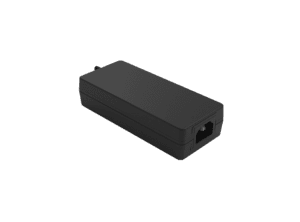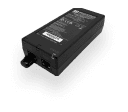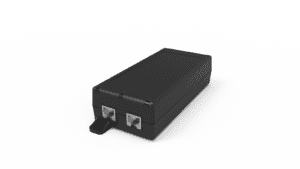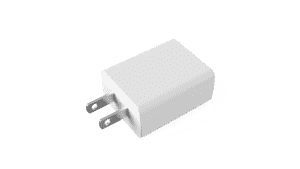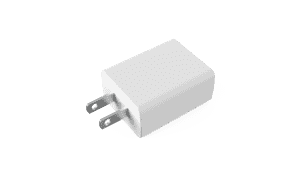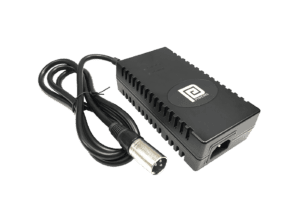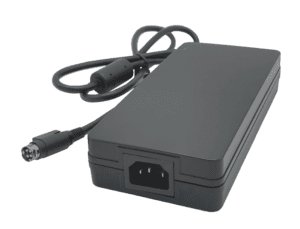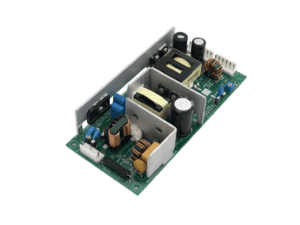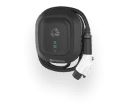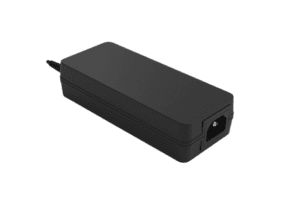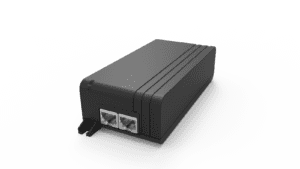BLOG
Understanding the IEEE 802.3at Standard: Advanced Power over Ethernet (PoE) Explained
Table of contents

Power over Ethernet (PoE) technology has transformed the way we power and connect network devices. The IEEE 802.3at standard, also known as PoE+, is an advanced PoE standard that enhances power capabilities, supporting more power-hungry devices and expanding the applications of PoE technology. This article takes a detailed look at the IEEE 802.3at PoE+ standard, explaining its key features, benefits, and applications for modern network infrastructures.
What is the IEEE 802.3at Standard?
The IEEE 802.3at standard, commonly referred to as PoE+, was introduced in 2009 as an advanced iteration of the original IEEE 802.3af standard, which provided a power output of 15.4 watts. This enhanced standard significantly increases the power delivery capability to a robust 25.5 watts, allowing it to support a broader spectrum of network devices that demand higher power levels. Devices such as pan-tilt-zoom (PTZ) cameras, advanced wireless access points, and other power-hungry equipment can now be effectively powered over Ethernet. By expanding the power budget, the IEEE 802.3at standard facilitates the deployment of more sophisticated and feature-rich devices in various network environments, promoting greater flexibility and efficiency in power delivery across diverse applications.
Key Features of the IEEE 802.3at PoE+ Standard
Higher Power Delivery
The most significant feature of the IEEE 802.3at standard is its ability to deliver up to 25.5 watts of power over Cat5 cables. This increased power capacity supports a wider range of devices and applications, from IP cameras and wireless access points to advanced VoIP phones, making it ideal for various modern networking needs.
Improved Power Sourcing Equipment (PSE) and Powered Devices (PD)
The standard defines improved specifications for Power Sourcing Equipment (PSE) and Powered Devices (PD), ensuring reliable power delivery and compatibility across different devices. This leads to enhanced performance and reduces the risk of power-related issues in network operations.
Enhanced Detection and Classification
The IEEE 802.3at standard includes advanced mechanisms for detecting and classifying PDs. This feature ensures that power is only delivered to compatible devices, effectively protecting non-PoE equipment from potential damage and optimizing overall power distribution within the network.
Backward Compatibility
The IEEE 802.3at standard is backward compatible with IEEE 802.3af devices, which provides significant flexibility in network upgrades. This compatibility allows organizations to gradually transition to newer technologies without needing to replace all existing infrastructure at once.
Streamlined Installations
The standard simplifies network infrastructure by reducing installation complexity and associated costs. With PoE+ capabilities, fewer cables and power outlets are required, making installations quicker and more efficient.
Network Scalability
The IEEE 802.3at standard provides the necessary power capacity to support future network expansions and upgrades. This scalability ensures that as organizations grow and add more devices, their network can adapt without requiring extensive redesign or new power solutions.
Benefits of Implementing IEEE 802.3at in Modern Networks
Implementing the IEEE 802.3at standard in modern networks offers numerous benefits that enhance overall network performance and efficiency.
Support for Advanced Devices
The increased power capacity of IEEE 802.3at supports advanced devices such as PTZ cameras, wireless access points, and digital signage, enabling more sophisticated network applications.
Simplified Network Infrastructure
By delivering both power and data over a single cable, IEEE 802.3at simplifies network infrastructure. This reduces the complexity and cost of installations and maintenance.
Future-Proofing Networks
Implementing IEEE 802.3at helps future-proof networks by providing the power capacity needed to support emerging technologies and applications. This ensures that networks can adapt to evolving business needs.
Top Applications of IEEE 802.3at PoE+
The IEEE 802.3at standard supports a wide range of applications, making it a versatile solution for various network environments.
PTZ Cameras and Surveillance Systems: PoE+ provides the power required for PTZ cameras and advanced surveillance systems, enabling flexible placement and comprehensive coverage.
Advanced Wireless Access Points: PoE+ powers advanced wireless access points, ensuring reliable connectivity and supporting high-bandwidth applications in office environments and public spaces.
Digital Signage and Displays: PoE+ supports digital signage and displays in retail and corporate settings, enabling dynamic content delivery without the need for separate power supplies.
VoIP Phones and Communication Systems: PoE+ powers VoIP phones and communication systems, reducing desk clutter and simplifying office setups.
Best Practices for Deploying IEEE 802.3at PoE+
Deploying IEEE 802.3at PoE+ in your network requires careful planning and execution to ensure optimal performance and reliability.
Conduct a Network Assessment
Before deploying PoE+, conduct a thorough network assessment to identify power requirements, device compatibility, and potential challenges. This helps in designing a robust PoE network that meets business needs.
Choose the Right Equipment
Selecting the right PoE equipment, including switches, injectors, and cabling, is crucial for a successful implementation. Ensure that all components are compatible with your devices and support the IEEE 802.3at standard. Choose equipment certified to meet IEEE 802.3at standards to ensure compatibility and safety.
Plan for Scalability
Design your PoE+ network with scalability in mind. Consider future expansion needs and choose equipment that can accommodate additional devices and increased power demands.
Invest in Quality Cabling
High-quality Ethernet cables, such as Cat 5e or higher, are essential for reliable power and data transmission in a PoE network. They minimize signal loss and interference, ensuring optimal performance and device safety. Investing in quality cabling enhances the longevity and reliability of the network, reduces maintenance issues, and ensures compliance with safety standards.
Monitor Power Usage
Regularly monitoring power consumption helps optimize energy efficiency and prevent overloading in a PoE network. By using monitoring tools, administrators can identify excessive consumption trends and make timely adjustments, such as redistributing loads or upgrading to energy-efficient equipment. This proactive approach leads to cost savings and ensures the infrastructure can support future demands.
Comparison with Other PoE Standards
The IEEE 802.3at standard is one of several PoE standards, each with its own specifications and use cases. Comparing IEEE 802.3at with other PoE standards helps in understanding its unique advantages and limitations.
IEEE 802.3af (PoE)
The IEEE 802.3af standard, established in 2003, provides a maximum power delivery of 15.4 watts per port. This makes it suitable for a variety of low-power network devices, such as VoIP phones, basic wireless access points, and IP cameras. However, its power limitations can pose challenges for more demanding applications, such as pan-tilt-zoom (PTZ) cameras, which often require more power to operate fully. Additionally, advanced wireless access points that support multiple users and higher data throughput may exceed the available power under this standard. As a result, while IEEE 802.3af remains widely used, users must carefully assess their power requirements to ensure compatibility with their devices.
IEEE 802.3bt (PoE++)
The IEEE 802.3bt standard, introduced in 2018, significantly expands the power capabilities of PoE, offering two types: Type 3, which provides up to 60 watts, and Type 4, which delivers up to 90 watts per port. This enhanced power capacity allows for the deployment of more demanding devices and advanced applications, including high-performance lighting systems, industrial automation equipment, and sophisticated IoT devices. With the ability to support a wider range of devices, IEEE 802.3bt facilitates the growth of smart building technologies, video conferencing systems, and advanced surveillance solutions. As businesses increasingly adopt power-hungry applications, the IEEE 802.3bt standard is becoming essential for modern network infrastructure, enabling efficient power delivery and enhanced functionality across various industries.
Future Trends in PoE Technology
As technology advances, new trends in PoE are emerging that offer even greater potential for modern networks.
Higher Power Standards
Emerging PoE standards, such as IEEE 802.3bt (PoE++), support higher power levels, enabling the use of more powerful devices and advanced applications.
AI and IoT Integration
Integrating PoE with AI and IoT technologies enhances the capabilities of smart networks, providing real-time data, predictive analytics, and automated controls.
Enhanced Security Measures
Future trends in PoE include enhanced security measures to protect against cyber threats, ensuring the reliable and secure operation of PoE networks.
Phihong’s Role in Advancing IEEE 802.3at PoE+ Solutions
Phihong has been a key player in the development and advancement of IEEE 802.3at PoE+ solutions. The company’s commitment to innovation and quality has positioned it as a leader in the PoE industry.
Innovative Product Development
Phihong has consistently developed new PoE+ products that meet the evolving needs of the market. These products include PoE+ injectors, midspans, switches, and splitters, each offering unique features and benefits.
Industry Collaboration
Phihong collaborates with industry organizations and standards bodies to advance PoE technology and ensure interoperability. This collaboration ensures that Phihong’s products meet the highest standards of quality and performance.
Customer-Centric Solutions
Phihong focuses on creating solutions that address the specific needs of its customers, from small businesses to large enterprises. The company’s dedication to customer satisfaction ensures long-term success and reliability.
CLIENT'S QUOTE
Phihong's Power-Over-Ethernet solutions have transformed our network, boosting efficiency and reducing costs. Their seamless integration has simplified both installation and maintenance.
Explore More with Phihong USA
As we conclude our exploration of PoE technology, it’s evident how these innovations are streamlining power and data integration across various industries. Phihong USA stands at the forefront of this technological advancement, offering a diverse range of power solutions designed to meet the evolving needs of modern industries.
Phihong USA’s extensive product lineup includes:
- Power over Ethernet (PoE) Solutions: Delivering reliable power and data transmission over a single cable, ideal for simplifying network installations and reducing costs.
- AC/DC Adapters and Power Supplies: From compact adapters to industrial-grade power supplies, Phihong provides solutions that ensure efficiency and reliability in various applications.
- Battery Chargers: Customizable chargers for lithium-ion and lead-acid batteries, supporting a wide range of power requirements for mobility and industrial applications.
- Medical Power Supplies: Specialized power solutions designed to meet the stringent requirements of the healthcare industry, ensuring safety and reliability.
Phihong USA is committed to innovation and excellence, continually developing products that meet the highest standards of performance and reliability. Their global reach and dedication to customer support make them a trusted partner in powering the future.
Here are some useful links to explore Phihong USA’s offerings further and bring in new potential clients:
Visit Phihong USA to discover how their advanced power solutions can support your business needs. Whether you’re looking to upgrade your network, or find reliable power supplies, Phihong USA has you covered.
By choosing Phihong USA, you’re partnering with a leader in power technology, ensuring your operations run smoothly and efficiently with top-tier power solutions.

Contact Our Team Today!
Our dedicated sales team and international partners are prepared to support you with your latest projects and initiatives globally.
FAQ
What is the IEEE 802.3at standard and why is it important?
The IEEE 802.3at standard, introduced in 2009, is an advanced Power over Ethernet (PoE) standard also known as PoE+. It increases the power delivery capability to 25.5 watts, supporting more power-hungry devices such as PTZ cameras and advanced wireless access points. This standard is important because it enhances the capabilities and applications of PoE technology, providing the power needed for more sophisticated network devices and ensuring reliable power delivery and data transmission.
What are the key features of the IEEE 802.3at standard?
The IEEE 802.3at standard provides several key features, including higher power delivery of up to 25.5 watts, improved specifications for Power Sourcing Equipment (PSE) and Powered Devices (PD), and advanced mechanisms for detecting and classifying PDs. These features ensure reliable power transmission, support more power-hungry devices, and protect non-PoE equipment. The standard is also backward compatible with IEEE 802.3af devices, ensuring flexibility in network upgrades.
How does IEEE 802.3at compare to other PoE standards?
The IEEE 802.3at standard supports up to 25.5 watts of power delivery, making it suitable for more demanding applications compared to the IEEE 802.3af standard, which supports up to 15.4 watts. In comparison, the IEEE 802.3bt (PoE++) standard supports even higher power levels, up to 60 watts (Type 3) and 90 watts (Type 4), enabling the deployment of more powerful devices and advanced applications. Each standard offers different power levels and capabilities, expanding the range of PoE applications.
What are the benefits of implementing IEEE 802.3at in modern networks?
Implementing the IEEE 802.3at standard in modern networks offers numerous benefits, including support for advanced devices, simplified network infrastructure, and future-proofing networks. The increased power capacity supports sophisticated network devices such as PTZ cameras, advanced wireless access points, and digital signage. The standard simplifies network installations by delivering both power and data over a single cable, reducing complexity and costs. It also helps future-proof networks by providing the power capacity needed to support emerging technologies and applications.

